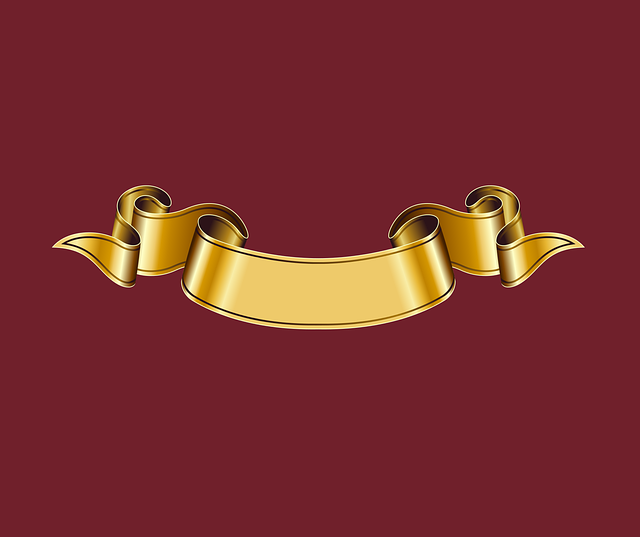The article explains how to convert a traditional IRA into one that allows for investment in gold and other precious metals through self-directed IRAs. These accounts enable investors to diversify their portfolios by including tangible assets like real estate, stocks, bonds, and physical precious metals such as gold, silver, platinum, and palladium. Investors must use a specialized custodian who follows IRS rules, store precious metals in an IRS-approved depository, and ensure compliance to maintain the tax-advantaged benefits of these accounts. The process involves transferring funds from an existing IRA to purchase compliant precious metals that meet specific purity standards set by the IRS. This diversification could protect against inflation and currency devaluation while still offering the tax advantages of traditional IRAs. It is imperative to conduct thorough due diligence and seek professional financial advice throughout this process to ensure all regulations are adhered to.
Navigating the intricacies of retirement planning often leads investors to explore unconventional yet promising avenues for investment growth. Among these, the conversion of a traditional IRA to gold has emerged as a strategy that merits careful consideration. This article delves into the process of establishing a self-directed IRA specifically tailored for precious metals investments, offering readers a comprehensive guide from understanding the mechanics to adhering to IRS guidelines. We’ll explore the steps necessary to open such an account, select a reputable dealer, and ensure your gold holdings remain within the confines of regulatory compliance. Join us as we chart a path through this golden investment opportunity.
- Understanding Self-Directed IRAs for Precious Metals
- Steps to Open a Self-Directed IRA for Gold Investments
- IRS Guidelines for IRA Investment in Gold
- Selecting a Trustworthy Precious Metals Dealer
- Storing Your Gold within IRS Compliance Framework
Understanding Self-Directed IRAs for Precious Metals

When considering the conversion of a traditional IRA to one that includes gold and other precious metals, it’s crucial to familiarize yourself with self-directed IRAs. These accounts diverge from conventional IRAs as they afford investors the opportunity to hold a diverse range of assets, including real estate, stocks, bonds, and most pertinently, physical precious metals like gold, silver, platinum, and palladium. The Internal Revenue Service (IRS) sets forth specific rules for these accounts to maintain their tax-advantaged status.
To initiate this process, one must first establish a self-directed IRA with a custodian who specializes in alternative assets. This custodian plays a pivotal role in facilitating the transaction while adhering to IRS regulations. The selected custodian will provide you with a list of approved depositories where your precious metals must be stored, as the IRS requires that these metals be held in an IRS-approved facility for the duration of your IRA’s existence. Once the account is set up and the funds are transferred from your existing IRA, you can then direct your custodian to purchase qualifying precious metals on your behalf, ensuring compliance with purity and fineness standards as outlined by the IRS. This strategic financial move allows for diversification of investment portfolios, potentially offering a hedge against inflation and currency devaluation, while also leveraging the tax advantages associated with traditional IRA accounts. It’s imperative to conduct thorough due diligence and consult with a financial advisor or tax professional well-versed in the intricacies of self-directed IRAs for precious metals to navigate this process effectively.
Steps to Open a Self-Directed IRA for Gold Investments

To initiate the process of investing in gold through an Individual Retirement Account (IRA), you must first establish a self-directed IRA. This type of IRA differs from traditional IRAs as it allows for a broader range of investment options, including physical gold, gold bullion, and gold mining stocks. The steps to open such an account are as follows:
1. Choose a Self-Directed IRA Custodian: Research and select a reputable custodian specializing in self-directed IRAs that permit precious metals investments. Ensure the custodian is approved by the Internal Revenue Service (IRS) and complies with all relevant regulations.
2. Establish the Account: Complete the account setup process by providing necessary personal information, choosing between a traditional IRA or a Roth IRA based on your tax situation, and determining the amount of funds you wish to roll over from an existing IRA or 401(k), or make a new contribution if within the annual limits.
3. Familiarize with IRS Rules: Understand the rules governing IRA investments, particularly those related to collectibles, as there are restrictions on certain types of gold coins and bullion. Familiarize yourself with the purity standards and legal tender requirements that the IRS mandates for gold holdings within an IRA.
4. Select Your Gold Investments: After your self-directed IRA is established and funded, you can choose your gold investments. Purchase physical gold in the form of coins (like American Gold Eagles), bars, or rounds that meet IRS standards, or invest in gold mining stocks, mutual funds, or Exchange-Traded Funds (ETFs) that focus on gold.
5. Use Your Custodian’s Network: Work with your custodian to source and purchase your selected gold investments. They will handle the transaction and ensure that the metals are stored in a qualified depository as required by IRS rules.
By carefully following these steps and staying informed about the regulations surrounding IRA investments in precious metals, you can effectively diversify your retirement portfolio with gold. Always consult with a financial advisor or tax professional to ensure compliance with current laws and regulations.
IRS Guidelines for IRA Investment in Gold

When considering the investment of gold within an Individual Retirement Account (IRA), adherence to Internal Revenue Service (IRS) guidelines is paramount. The IRS permits self-directed IRAs to hold a variety of assets, including certain types of precious metals, subject to specific requirements. These requirements mandate that the gold must be of a fineness or purity designated by the IRS, typically 99.9% for coins and 99.5% for bars. The IRS stipulates that the gold must be acquired from a reputable dealer or depository that provides IRS-approved gold products. Furthermore, the gold must be stored in an IRS-approved depository if it is not held within a trustee-based plan. This ensures that the investment remains within the confines of IRS regulations and maintains its tax-advantaged status within the IRA framework.
The IRS outlines detailed criteria for the types and storages of precious metals allowed in an IRA to include gold. For coins, acceptable examples include American Gold Eagles and Canadian Gold Maple Leafs. Bars must be manufactured by a recognized refiner and carry an assayers mark and serial number. Investors are also advised to keep records of all transactions for audit purposes. Additionally, the IRS mandates that gold held within an IRA cannot be taken delivery of personally; it must remain in the custody of a qualified custodian or depository until the account holder reaches the age of majority or begins taking distributions from their IRA, at which point the rules governing IRA withdrawals apply.
Selecting a Trustworthy Precious Metals Dealer

When contemplating the conversion of an IRA to gold, one of the most critical steps is selecting a reputable precious metals dealer. These dealers specialize in offering IRS-approved gold, silver, platinum, and palladium products that can be held within a self-directed IRA. It’s imperative to conduct thorough research to identify a dealer with a track record of transparency, compliance, and fair pricing. Look for dealers accredited by the Better Business Bureau (BBB) or those holding membership in industry organizations like the Industry Council for Tangible Assets (ICTA) or the Professional Coin Grading Service (PCGS). These credentials can serve as indicators of a dealer’s reliability and expertise. Additionally, consider their reputation among customers, which can often be gauged by reading reviews and checking for customer feedback online. The dealer you choose should provide detailed invoices and facilitate the process of transferring funds from your existing IRA to purchase the precious metals without causing taxable events. Ensuring that the metals are stored in a facility compliant with IRS rules is also essential, as it safeguards the tax-advantaged status of your investment. By diligently selecting a trustworthy precious metals dealer, you lay a solid foundation for the successful conversion and management of your IRA assets within the precious metals market.
Storing Your Gold within IRS Compliance Framework

When considering the conversion of a traditional IRA to one that includes gold or other precious metals, it is imperative to adhere to the Internal Revenue Service (IRS) guidelines. The IRS stipulates specific rules for holding physical commodities such as gold within an Individual Retirement Account (IRA). To maintain compliance, investors must utilize depositories or approved vaults that specialize in precious metals storage. These facilities provide secure, insured environments that comply with IRS regulations, ensuring that the gold remains an eligible retirement fund asset. The IRS requires that the gold be authentic, meet purity standards, and be stored for the entire duration of the IRA’s existence, not commingled with personal property, and readily transferable back to the custodian upon request. By partnering with a self-directed IRA custodian that is experienced in precious metals transactions, investors can navigate this process effectively, ensuring their gold investments are both compliant and protected within the framework set forth by the IRS.
Transitioning an Individual Retirement Account (IRA) to include gold as an investment requires careful planning and adherence to specific guidelines. By establishing a self-directed IRA that permits precious metals, you can diversify your retirement portfolio in a manner compliant with IRS regulations. This article has outlined the critical steps to initiate such an investment, from choosing a reputable precious metals dealer to ensuring your gold is stored within the confines of IRS-mandated frameworks. With the right approach and due diligence, incorporating physical gold into your retirement savings can be a strategic addition to your financial future.
